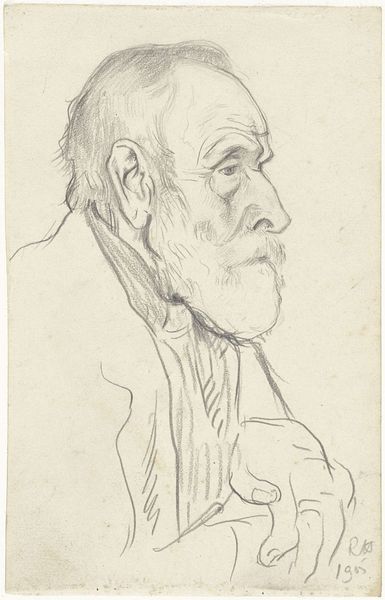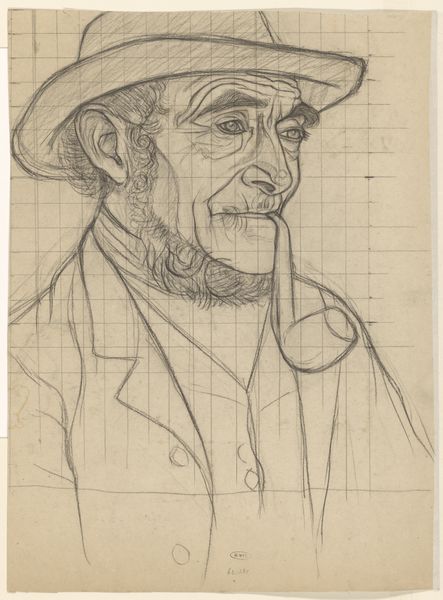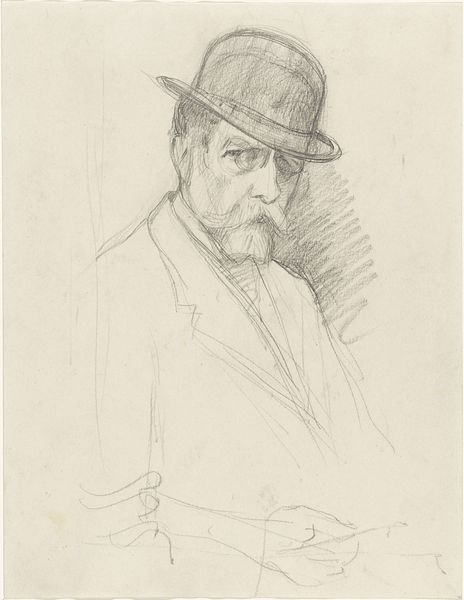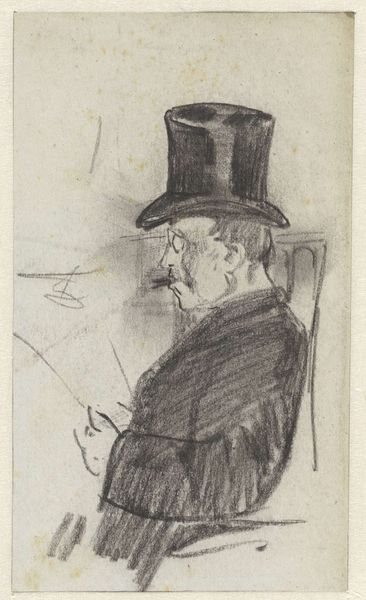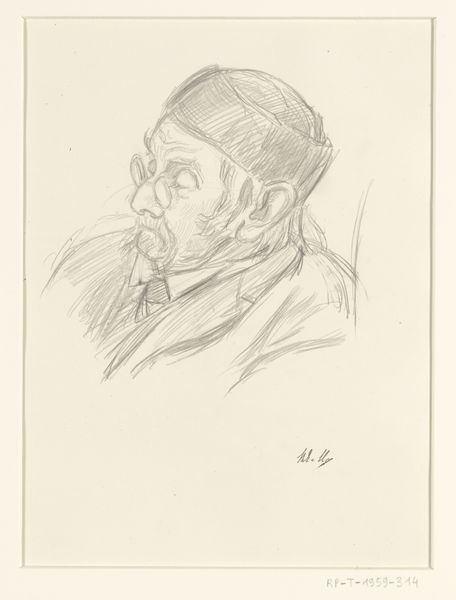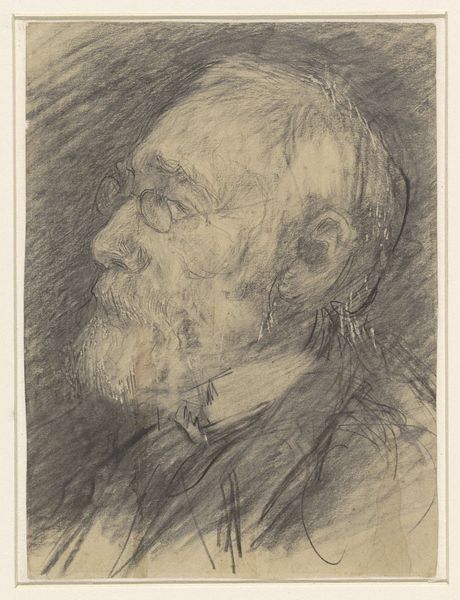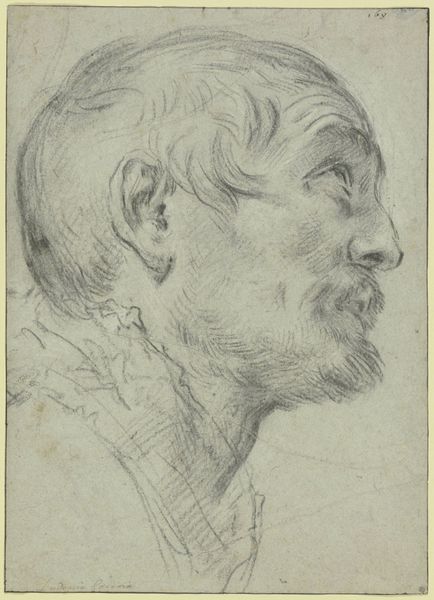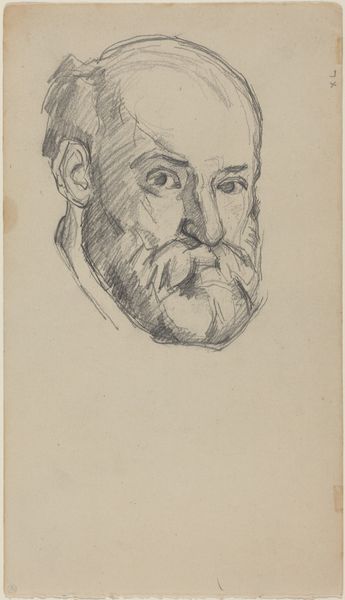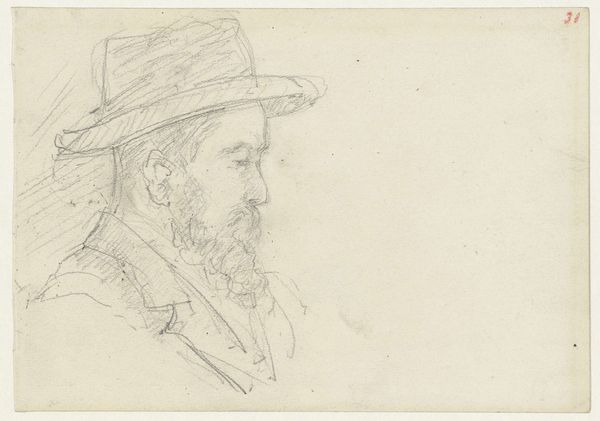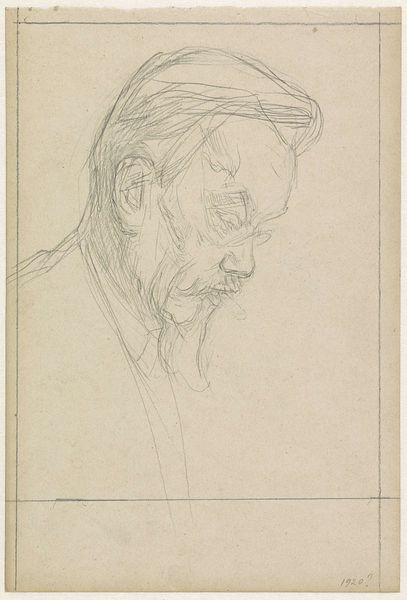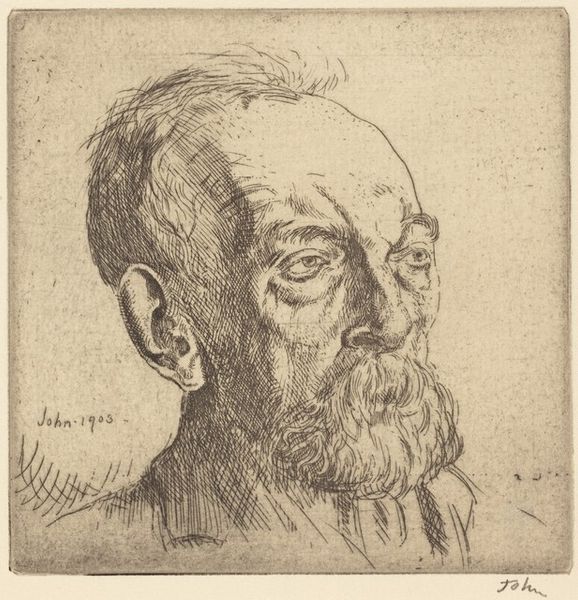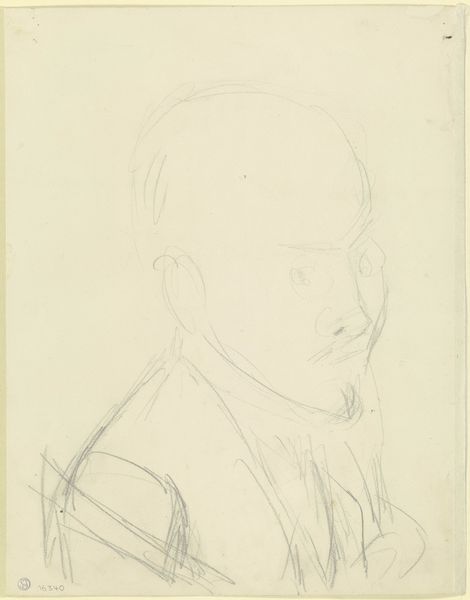
drawing, pencil
#
portrait
#
drawing
#
caricature
#
pencil
#
portrait drawing
#
realism
Dimensions: height 144 mm, width 86 mm
Copyright: Rijks Museum: Open Domain
Editor: This is "Portret van de beeldhouwer Lambertus Zijl," a portrait drawing from between 1874 and 1925 by Jan Veth, rendered in pencil. It's currently housed at the Rijksmuseum. I'm struck by the subject's weary gaze and somewhat caricatured features. What symbols or ideas jump out at you when you look at this? Curator: I see a visual record that leans into archetype and cultural memory. Observe the hat, a symbol, during this period, of the intellectual or the common laborer – here worn at a tilt that suggests a blend of both. Note, too, how the exaggerated nose and prominent ears might speak to the sitter's perceived shrewdness or earthy connection. Consider: Are these realistic features or subtly coded signs meant to tell us something more about Zijl’s social standing, personality, and even profession, reflecting the values that resonated with its intended viewers? Editor: So, the portrait isn't just about capturing a likeness? Curator: Precisely. The drawing participates in a dialogue larger than itself. Think of the Dutch tradition of emphasizing realism—and yet Veth veers towards caricature. What could that conscious exaggeration tell us about his intent, about Lambertus Zijl's place within the art world of that time, and, dare I say, perhaps even about Veth's relationship with his subject? The medium itself, humble pencil, echoes a certain working-class modesty, contradicting a purely aspirational image. Editor: That's fascinating – I hadn't considered the medium itself as part of the symbolic language. Curator: These layers of coded visual cues allow us to not only see the surface representation of the artist but invite a much deeper and multifaceted exploration of an era. It reflects how artists themselves were perceived, valued, and remembered within the cultural tapestry of their time. Editor: I'll certainly look at portraiture differently now. Thank you! Curator: It's through understanding these layers that we see how much meaning one simple image can truly hold.
Comments
No comments
Be the first to comment and join the conversation on the ultimate creative platform.
